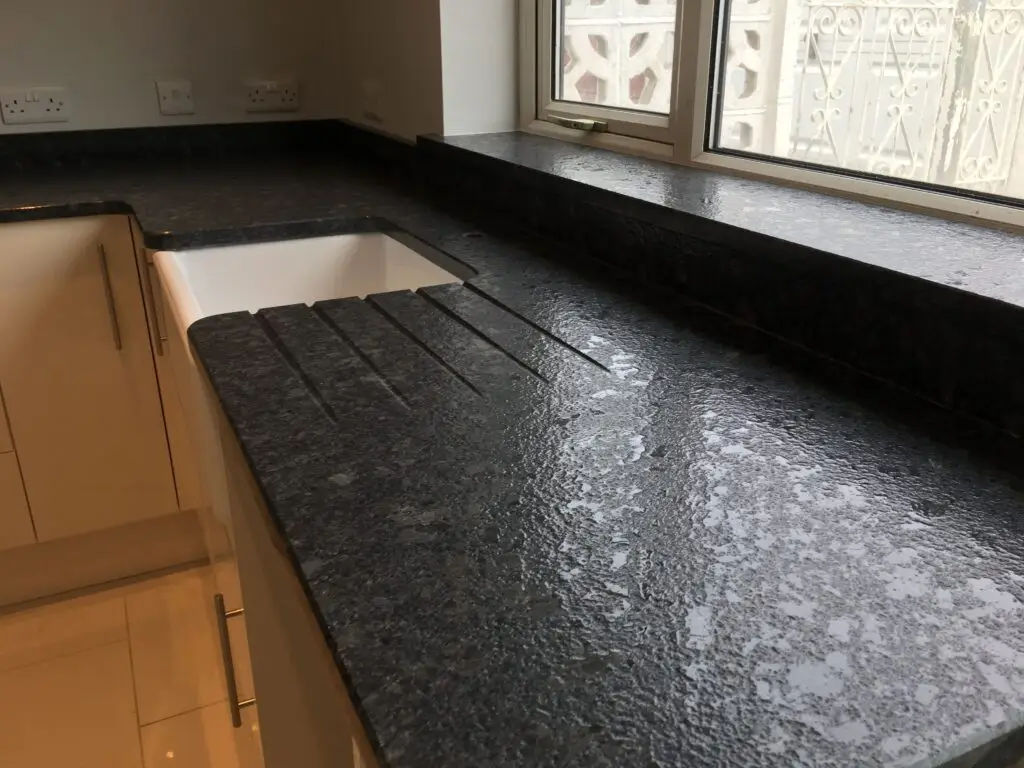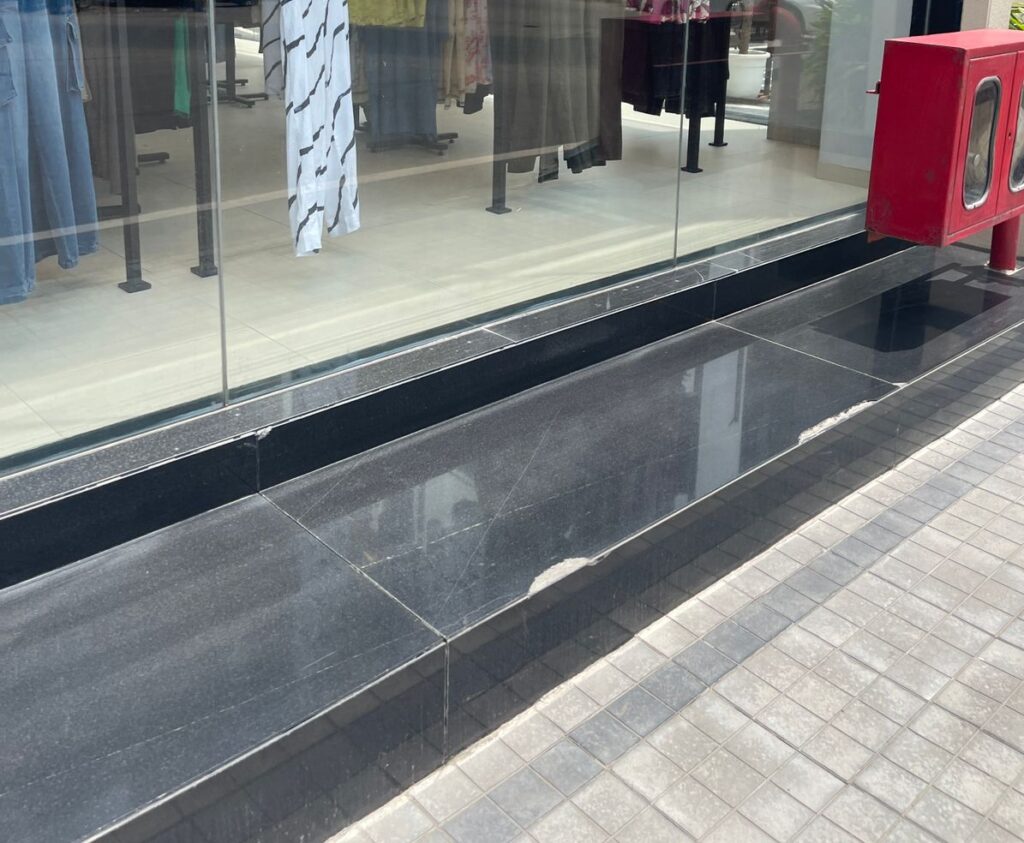When it comes to granite installation in kitchens and stairs in India, many homeowners and contractors are tempted by the lower cost of 15 mm double-layer granite. However, while this method may appear economical, it often leads to structural issues, aesthetic compromises, and higher long-term maintenance costs. On the other hand, 30 mm single-layer granite offers unmatched durability, strength, and aesthetic consistency, making it the undisputed superior choice for both kitchens and stairs.
Common Problems with 15 mm Double-Layer Granite
1. Weaker Structural Strength
One of the most significant drawbacks of 15 mm double-layer granite is its lack of inherent strength. Even when bonded together, the two layers do not offer the same durability as a solid 30 mm slab. Over time, the bonding agent can weaken, making the surface prone to cracking and separation, especially in high-traffic areas like staircases.
🚫 Why It’s a Problem:
- Staircases endure constant foot traffic, and weak bonding between thin layers makes them prone to cracking.
- In kitchens, heavy pots, pans, and appliances can cause double-layer slabs to sag or split.
✅ Why 30 mm Granite is Better:
- Higher Structural Integrity: A single 30 mm slab is naturally stronger, with no risk of delamination.
- Long-Term Stability: It can withstand more pressure and weight without weakening, making it ideal for heavy-use areas.
2. Visible Seams and Uneven Finish
With double-layer granite, the seam between the two layers often becomes visible over time. This is particularly noticeable along the edges, giving the installation an unrefined and cheap appearance.
🚫 Why It’s a Problem:
- Inconsistent surface texture reduces visual appeal.
- Seams can collect dirt and moisture, leading to long-term discoloration.
✅ Why 30 mm Granite is Better:
- Seamless and Elegant Look: A single-layer slab offers a smooth, continuous surface without visible seams.
- Enhanced Aesthetic Appeal: Its uniform thickness gives it a premium and luxurious appearance.
3. Bonding Issues and Layer Separation
Double-layer granite relies on adhesives to hold the slabs together. Over time, exposure to heat, moisture, and pressure weakens the bond, causing the layers to separate. This is especially common in kitchens, where water exposure is frequent, and on stairs, where vibrations occur regularly.
🚫 Why It’s a Problem:
- Separated layers create uneven surfaces, making the countertop or stair unsafe.
- Moisture seepage between layers leads to long-term damage.
✅ Why 30 mm Granite is Better:
- No Adhesive Dependency: A 30 mm slab is a single, solid piece, eliminating the risk of layer separation.
- Moisture Resistance: With no bonding layer, it is less prone to water damage and delamination.
4. Reduced Durability and Higher Maintenance
Thinner granite slabs are more prone to chipping and cracking. Even though double-layering makes them appear thicker, their durability remains inferior. The edges are particularly vulnerable to damage, making them unsuitable for high-traffic areas like stairs.
🚫 Why It’s a Problem:
- Frequent repairs and re-bonding lead to higher maintenance costs.
- Edges on stairs are more likely to chip, creating safety hazards.
✅ Why 30 mm Granite is Better:
- Exceptional Durability: The solid thickness resists chipping and cracking, even under heavy foot traffic or impact.
- Low Maintenance: With no bonding issues or edge fragility, 30 mm slabs require minimal repairs and touch-ups.
5. Inferior Heat and Weight Resistance
Granite is often used in kitchens due to its heat resistance. However, 15 mm double-layer granite has reduced heat resistance, as the adhesive layer is susceptible to weakening when exposed to high temperatures. This is particularly risky around stovetops.
🚫 Why It’s a Problem:
- Adhesive softens or weakens with heat exposure.
- Stairs may warp or loosen over time due to thermal expansion.
✅ Why 30 mm Granite is Better:
- Superior Heat Resistance: A single 30 mm slab can withstand high temperatures without weakening.
- Better Load Capacity: It can hold more weight without sagging or cracking, making it ideal for both kitchens and stairs.
🔥 Key Reasons to Choose 30 mm Single-Layer Granite Over 15 mm Double-Layer
- Durability: With no weak seams or adhesive dependency, 30 mm granite is structurally stronger and longer-lasting.
- Low Maintenance: No risk of layer separation, meaning fewer repairs and lower maintenance costs.
- Better Aesthetics: A seamless, elegant finish enhances the visual appeal, making the space look more refined.
- Increased Property Value: High-quality 30 mm granite installations add long-term value to the property.
- Safety and StabilityQ: On stairs, the solid thickness provides better grip and stability, reducing the risk of accidents.
✅ Final Verdict: Go for 30 mm Single-Layer Granite
While 15 mm double-layer granite may initially seem cost-effective, it leads to higher maintenance costs, frequent repairs, and aesthetic compromises in the long run. In contrast, 30 mm single-layer granite offers superior strength, durability, and elegance, making it the smarter and more cost-effective investment for kitchens and stairs.
For homeowners in India seeking lasting quality, investing in 30 mm granite ensures a sturdy, stylish, and low-maintenance installation that will stand the test of time. Don’t compromise on quality—choose the strength and reliability of 30 mm single-layer granite for a beautiful and enduring finish.


